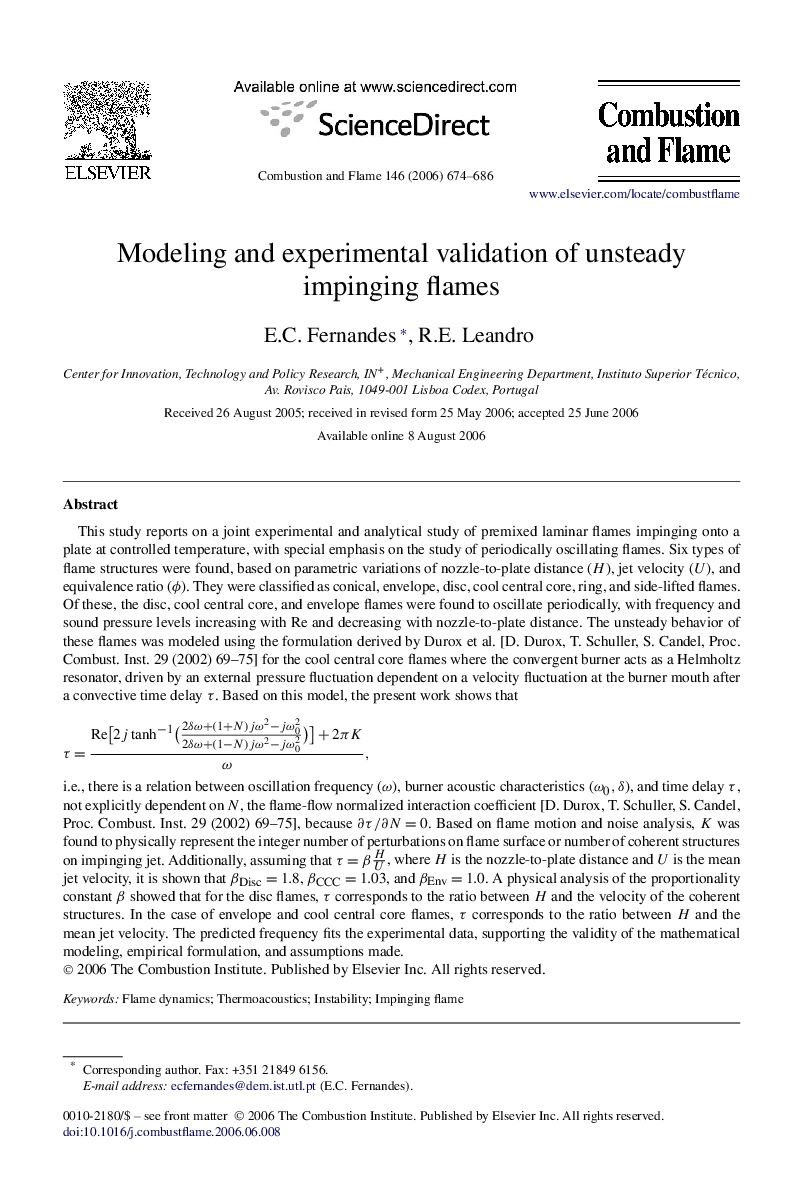| Article ID | Journal | Published Year | Pages | File Type |
|---|---|---|---|---|
| 170123 | Combustion and Flame | 2006 | 13 Pages |
This study reports on a joint experimental and analytical study of premixed laminar flames impinging onto a plate at controlled temperature, with special emphasis on the study of periodically oscillating flames. Six types of flame structures were found, based on parametric variations of nozzle-to-plate distance (H), jet velocity (U), and equivalence ratio (ϕ). They were classified as conical, envelope, disc, cool central core, ring, and side-lifted flames. Of these, the disc, cool central core, and envelope flames were found to oscillate periodically, with frequency and sound pressure levels increasing with Re and decreasing with nozzle-to-plate distance. The unsteady behavior of these flames was modeled using the formulation derived by Durox et al. [D. Durox, T. Schuller, S. Candel, Proc. Combust. Inst. 29 (2002) 69–75] for the cool central core flames where the convergent burner acts as a Helmholtz resonator, driven by an external pressure fluctuation dependent on a velocity fluctuation at the burner mouth after a convective time delay τ. Based on this model, the present work shows thatτ=Re[2jtanh−1(2δω+(1+N)jω2−jω022δω+(1−N)jω2−jω02)]+2πKω, i.e., there is a relation between oscillation frequency (ω ), burner acoustic characteristics (ω0,δω0,δ), and time delay τ, not explicitly dependent on N , the flame-flow normalized interaction coefficient [D. Durox, T. Schuller, S. Candel, Proc. Combust. Inst. 29 (2002) 69–75], because ∂τ/∂N=0∂τ/∂N=0. Based on flame motion and noise analysis, K was found to physically represent the integer number of perturbations on flame surface or number of coherent structures on impinging jet. Additionally, assuming that τ=βHU, where H is the nozzle-to-plate distance and U is the mean jet velocity, it is shown that βDisc=1.8βDisc=1.8, βCCC=1.03βCCC=1.03, and βEnv=1.0βEnv=1.0. A physical analysis of the proportionality constant β showed that for the disc flames, τ corresponds to the ratio between H and the velocity of the coherent structures. In the case of envelope and cool central core flames, τ corresponds to the ratio between H and the mean jet velocity. The predicted frequency fits the experimental data, supporting the validity of the mathematical modeling, empirical formulation, and assumptions made.
